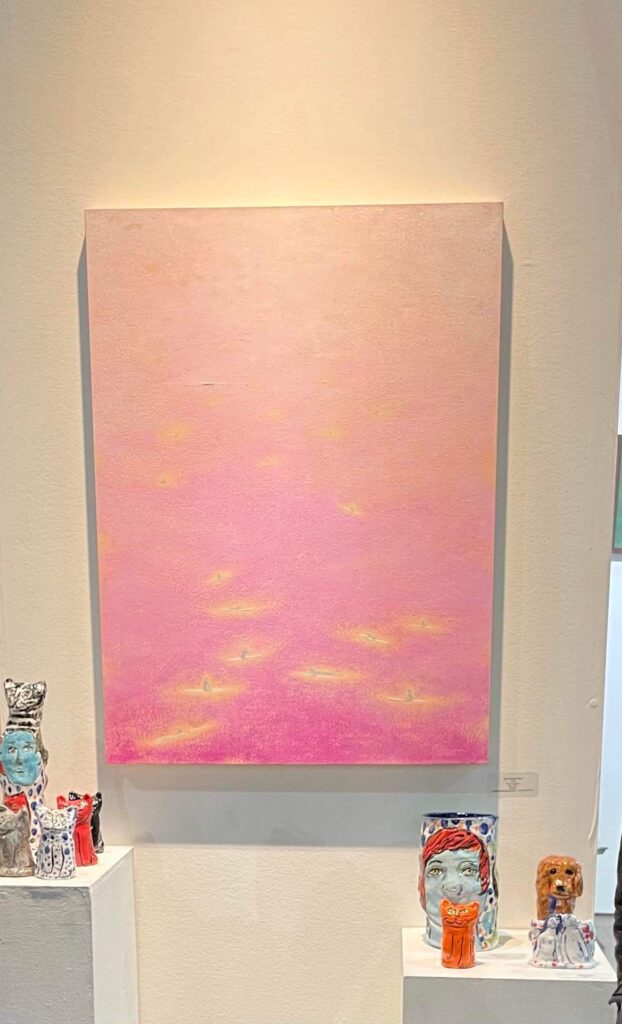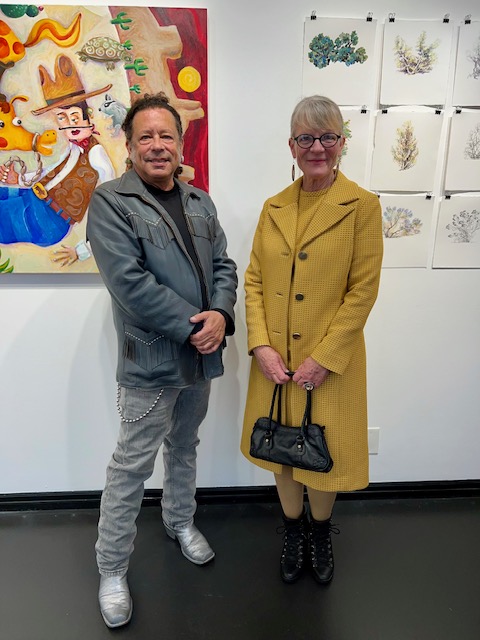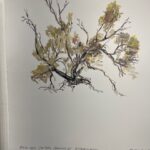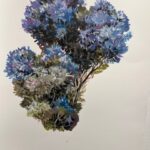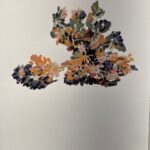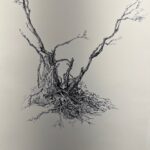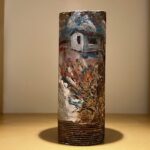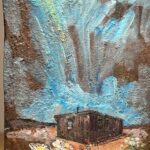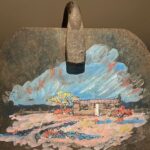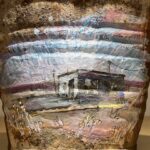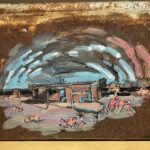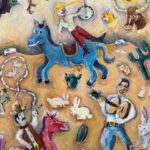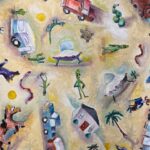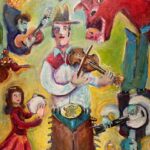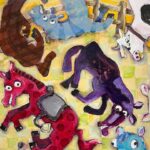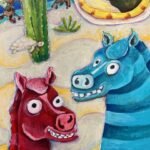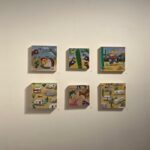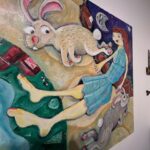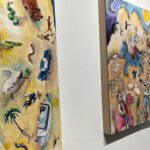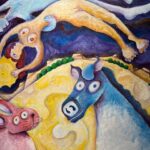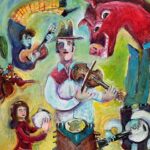As always, the LA Art Show served up a tasty treat of art in a wide variety of mediums. There were informative talks, passionate performance, themes of climate change, a heady dose of trippy AI, splashes of neon, cool cats, and a charitable beneficiary, this year the American Heart Association, especially appropriate given the event’s opening night was on Valentine’s Day.
More than 120 galleries offered commercial art, fine art, experimental art, and some dashes of comic relief; opening night attendees glittered and lined up for Pink’s Hot Dogs, creme brulee, and champagne, Robert Vargas live painted his “World House” on a massive, mural-sized canvas; and street art vibes, laser cut metal work, and a manga-decorated portable tea house were all present and art-accounted-for.
DIVERSEartLA, comprising the 7 non-commercial art institutions exhibiting, offered the most excitement with a focus on cilmate change, immigration, faux mythologies, and the use of a drawing machine. AI was all around, lush and evocative and fascinating, but also, ultimately, still bringing up that giant question mark as to its impact. We have come to accept the horrors and complexities and hopes entwined in the confrontation of climate change, but have we yet to acclimate to another vast sea change in our lifetime, brought by artificial intelligence?
Let’s take a look at some of what we saw.
Andy Moses shimmered with motion at Melissa Morgan Palm art, far, left, while pink neon vibrated color, and a truly terrific, sculptural cat and dog duo pranced.
From golden hills to a dimensional portico leading to the sea to the pink morning water glow on resting surfers painted by Gay Summer Rick, landscapes were hardly stereotypical. Adjoining Rick’s work at bG Gallery are Linda Smith’s whimsical ceramic cats; below, bG dominated on the sweet non-edible Valentine’s treat art – far right, from Tom Pergola.
Emily Madigan’s magical jeweled beasts were at StartUp Curatorial; J.T. Burke also dazzled, with his jeweled succulent image, right.
Copo Gallery fascinated with images from the apocalyptic to the whimsical.
The cool of metal abstracts meets the vibrant pop of floral color…
Kim Bareu is all bright whimsey at Gallery X2; but some neon cannabis noodles could be whimsical, too; ditto the work of Mr. Brainwash.
Quintessentially LA – the Pink Panther, the freeway dream of Dalila Vonden Stemmen at MRG Fine Art; a surreal and somehow super LA landscape and home.
Multiples…
The magic of MOAH performance artists Kaye Freeman and Amy Kaps, aka Hibiscus TV artists. More from Guillermo Bert; the immersive sculptural and film AI of “Be Water” from Chilean DIVERSEartLA exhibitor AAL Museum’s artist, Antuan.
From Antuan’s changing AI landscape, to AI assisted tapestery and sculptures far right, and below left two images, ”
Above left, “Fake Memories of a True Past” curated by Moises Schiaffino; middle “Bridging Emotional and Digital Landscapes” allows viewers to interact with AI through a type-in word conversion, creating images above. My word was “child,” creation rendered in far left corner. Image far right: sculptural indications of climate change and flooding from Osceola Refetoff and MOAH, more images from his photographic and film series below.
Above, also Refetoff, infrared photography at Melissa Morgan Gallery.
Entirely new profiles, in paint and in sculpture.
Quintessential American seascape, left; gorgeous blooms from Paris in the middle; a performance artist becomes the subject of an artist’s detailed sketch.
The fabulous oil image of a house afire matches well with political-context neon, and Guillermo Bert’s laser cut sculptures of immigrant workers.
A cosmic eye, very large Zen heads, and a brilliantly vibrant urban scene converge.
Gumby says hi, a classic nymph does a pop-up.
J & J Art presents a buccolic and beautiful chicken romance while Jacobo Eid’s fascinating small plastic figures dance at a Madrid gallery booth.
Thick paint is always a draw – abstract, flower petals, and the classic richness of a wooly lamb.
Dimensional illusions delight – far right, the paper “stained glass” of Lorraine Bubar.
Feiran Wang’s Mutated Chicken brought big smiles; as did stooping inside the portable tea house of Tokyo’s Manga Art Heritage collaborators (far right, and below left).
To the right – Building Bridges Art Exchange in Santa Monica more or less encapsulated 2024 – aren’t we all the dog in the yellow booties, sticking our heads through a hole in the wall, despite meeting the resistance of our plastic safety cones? (Worn for our own good, of course.)
Glass art sparkled.
The natural world becomes slightly surreal…
Naim June Paik at Scott & Jae, a lustrous garden; mysteriously glowing abstracts.
A fresh take on naive art style and collage, left; live drumming draws a crowd, right.
Fabrik Projects Gallery’s The Soul of the City included a wide range of photographic talent, including a terrific piece from Maureen Haldeman, below.
That’s LA, for you. And that’s the LA Art Show 2024 edition. The city’s oldest art fair and still my homegrown favorite. AI’ght?
- Genie Davis; photos by Genie Davis









